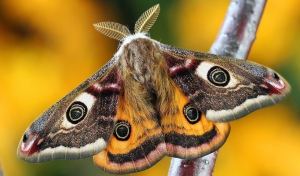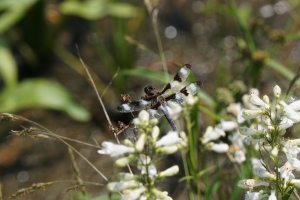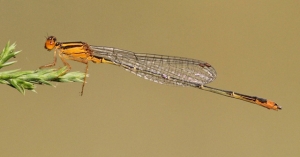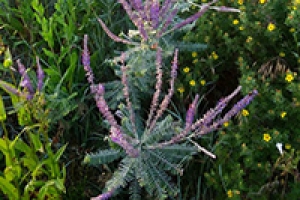
Like Moths To A Flame
Moths are known for their beauty and curious attraction to light. These alluring creatures often are overlooked when compared to their close relative, the butterfly. There are a total of 835 species of butterflies in North America. While this number may seem high, it does not compare to the 12,000 total number of moth species in North America alone. Worldwide, there is a whopping total of 160,000 species of moth. For butterflies, there are only 17,500 species worldwide.
How to Train your Dragon-fly: Virtual Event
Summer is a prime time for catching and observing zipping dragonflies! In Wisconsin alone, there are 164 species of dragonfly and damselfly. Each one of these species not only has unique iridescent coloring to their thoraxes and abdomens but distinctive wings that are unique to each dragonfly. Scientists have been surveying dragonflies since the 1800s but their migratory patterns are still not fully understood and it is difficult for scientists to survey entire states without the help of the community. In recent years, the popularity of community science projects has allowed members of the community to participate in collecting data. Participating in dragonfly/damselfly surveying helps scientists study and conserve these mysterious shimmering odonates.
Welcome to the Wonderful World of Odes: My Early Experience
It all started in the summer of 2018, which was my first true exposure to the world of dragonflies and damselflies. This was followed by my first field season leading odonate surveys with the Urban Ecology Center during the summer of 2019.
I’m not sure I can pinpoint what it is that is so utterly addictive about seeking out these flying assassins.
How you can Connect to Nature and Contribute to Research!
We know COVID-19 is affecting everyone in Milwaukee County in many different and difficult ways. We are now spending a lot of time indoors living, working, and teaching as we care for ourselves and one another through physical distancing. However we also know that nature has incredible healing and calming powers that we want you to take advantage of during this stressful time. Whether that is in your backyard, in a park, or even through your window, we hope you have the chance to interact with the outdoors. Before you head outside, please abide by all health and social distancing recommendations by the CDC as well as by local health officials as they can change with every passing day. Please use your best judgment as your safety and ultimately the public’s safety is of utmost importance.
Mourning Cloaks and Butlers, the Silent Heralds of Spring
Met with the blaring calls of the Red-winged Blackbirds and joyful chatter of Robins when stepping outside, you know it’s springtime in Wisconsin. These sounds create a feeling of warmth and excitement for the summer months that are just around the corner, and are a sure sign of the changing seasons. There are, though, harbingers of spring that aren’t so vociferous. In fact, two species in particular are rather silent in their seasonal debut, but just as telling. The Mourning Cloak butterfly and the Butler’s Gartersnake are two species that rise from their winter hibernation rather than migrating back into Wisconsin.
A Snake Story
I stopped to talk to Carol, the Tuesday afternoon receptionist at Riverside Park, on my way in from teaching. Carol is so lovely; I’ve really enjoyed getting know her over the years via a mutual love of reading and traveling, and I always look forward to our Tuesday chats.
Today she offered to lend me a great book she’d just finished and I told her about the snake I’d found on a hike this afternoon. After I returned to my office, the phone started ringing.
Help us Monitor Nocturnal Animals at a Mini-BioBlitz
Bring your friends and family and help us count and document the different animal species in the parks we manage this summer during our Mini-BioBlitzes.
Before we get any further, what the heck is a BioBlitz? Well, a BioBlitz is typically a 24-hour event that focuses on finding and identifying as many species of plants, animals, fungi, and any others organisms as possible in one area. The goal is to create a snapshot in time of everything that is present.
Experience the nocturnal biodiversity and ecological richness of the natural areas around our three branches during a 2-hour Mini-BioBlitz on July 22nd at Washington Park, August 19th at Riverside Park and August 21st at Menomonee Valley.
Join us in the firefly exploration this summer!
Perhaps you remember dancing through the cool grass on a summer night, eyes carefully fixed on small, fleeting glimpses of light as they traveled silently through the air. You’d reach out and quickly grab into the darkness, and, if you were lucky, the spaces between your fingers would illuminate a bright green – leaving your face glowing with wonder. Many people have a joy of catching fireflies and watching them dazzle the night air. It can truly be a breathtaking experience.
Native Plants to Know: Leadplant
Those who prefer instantaneous beauty or plump plants may give up on leadplant (Amorpha canescens) well before it reaches "maturity" at 5+ years of age, but the patient gardener will be rewarded with decades of drought resistant silvery foliage and purple flowers.
Collaborating to Conserve Bats
The Urban Ecology Center’s Research and Community Science program surveys about 30 different types of wildlife, including birds, mammals, reptiles, amphibians, and invertebrates. This amounts to an estimated 300 field research surveys per year! Among all of this, one project in particular stands out as being part of almost every single work day this spring and summer: acoustic bat monitoring.
Copyright © 2023 The Urban Ecology Center












